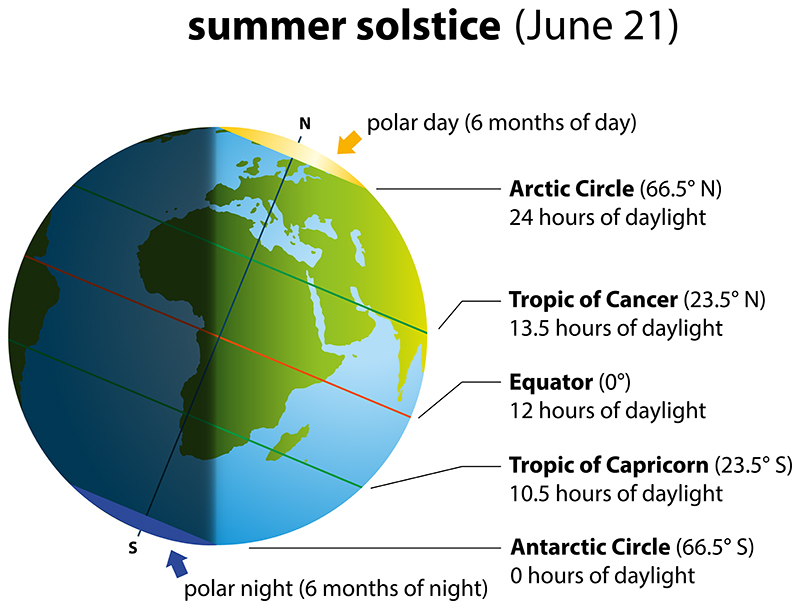Context
-
The longest day of the year, for anyone living north of the Equator, is June 21.
- The day is referred to as the summer solstice, and it occurs when the Sun is directly over the Tropic of Cancer, or more specifically right over 23.5 degrees north latitude.

Why do we have the summer solstice?
- Since Earth rotates on its axis, the Northern Hemisphere gets more direct sunlight between March and September over the course of a day, which also means people living in the Northern Hemisphere experience summer during this time.
- The rest of the year, the Southern Hemisphere gets more sunlight.
- During the solstice, the Earth’s axis — around which the planet spins, completing one turn each day — is tilted in a way that the North Pole is tipped towards the Sun and the South Pole is away from it.
- Typically, this imaginary axis passes right through the middle of the Earth from top to bottom and is always tilted at 23.5 degrees with respect to the Sun.
- Therefore, the solstice, as NASA puts it, is that instant in time when the North Pole points more directly toward the Sun than at any other time during the year. Solstice means “sun stands still” in Latin.
- While the solstice occurs at the same time across the world, different countries experience it at different times according to their time zones.
What happens during the solstice?
- This day sees the Earth receiving a greater amount of energy from the Sun.
- The maximum amount of sunlight received by the Northern Hemisphere during this time is usually on June 20, 21 or 22.
- In contrast, the Southern Hemisphere receives most sunlight on December 21, 22 or 23 when the northern hemisphere has its longest nights — or the winter solstice.
- The amount of light received by a specific area in the Northern Hemisphere during the summer solstice depends on the latitudinal location of the place.
- The further north one moves from the equator, the more light one receives during the summer solstice.
- At the Arctic Circle, the sun does not set during the solstice.
- Summer solstice, however, does not necessarily mean the earliest sunrise or latest sunset. That depends on the latitudinal location of the country.
Source: IE
Visit Abhiyan PEDIA (One of the Most Followed / Recommended) for UPSC Revisions: Click Here
IAS Abhiyan is now on Telegram: Click on the Below link to Join our Channels to stay Updated
IAS Abhiyan Official: Click Here to Join
For UPSC Mains Value Edition (Facts, Quotes, Best Practices, Case Studies): Click Here to Join
